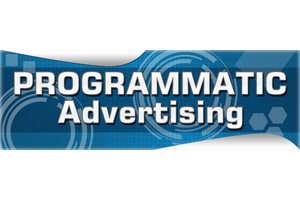The Machines are Taking Over
Programmatic has the Power to Benefit Pharma Advertising
Programmatic buying – buying online advertising through a machine-to-machine marketplace – is changing digital advertising. While programmatic advertising has been a staple for consumer packaged goods (CPG) for several years, accounting for 52% of non-search digital ad spend,1 pharmaceutical brands have been slower to adapt. However, this is changing.
Pharma’s fears behind adopting programmatic include the quality and location of the ad placement, restrictions on pharma advertising such as competitive exclusions (prohibiting ads to show on the same page as a competitor’s ad), excluding ads on user generated content, global corporate policies that prohibit retargeting or the use of the ad choice icon (usually for fundamentally flawed reasons), and various other concerns.
However, the market is evolving and pharma is beginning to engage in programmatic ad buying. What is most interesting about this evolution is how this shift is likely to impact the larger media ecosystem.
Agencies are scrambling to build, buy, or partner with a programmatic firm in order to offer the service to clients. But the irony here is that programmatic buying often greatly reduces or eliminates the need for an agency media team to be involved in the digital ad buying process.
Most of the major CPG companies, who spend considerable dollars programmatically, have their own in-house media group that run at a fraction of the cost of hiring a media advertising agency. Some pharmaceutical companies are shifting media buying in-house, as well. As ad serving tools evolve to target anyone on any web property, making ad placement as easy as placing a buy order for a stock trade, the role of the media agency is brought into question.
In order to stay in the game, many agencies are building their own independent “private exchanges” or programmatic marketplaces. The challenge for a programmatic marketplace to be successful is that it requires wide-spread participation from both buyers and sellers of media, data for targeting, transparency, and participant controls (a buyer controlling their price and placements, and a seller controlling their rate floors and standards).
Agencies who build their own exchanges, by definition, are only participating in their share of the buy-side marketplace. In other words, competitive agencies are not likely to buy or participate in another agency’s exchange. Therefore, it becomes a limited marketplace.
Furthermore, it is the publishers who control the data around identifying doctors, targeted patient populations, and the other data that drives programmatic targeting. Without a willing participation by publishers to give up their data to an agency exchange, which is like asking them to give up their first born child, agency exchanges may lack quality data for targeting.
Exchanges operate on a fee structure, this means that the owner of the exchange will benefit from more advertisers using the exchange. Therefore, it is in the best interest of the agency to push their own exchange. This poses a conflict of interest for agencies that are chosen as an independent neutral agent for selecting the best media placements for the brand; the agency is suddenly neither independent nor neutral in their planning. Models where the client’s best interests are being compromised, typically don’t last long.
Publishers are often in no better position to build or participate in an exchange for the mirror image reasons. Competitive publishers are not likely to play in a competitor’s private exchange, so supply becomes limited. Furthermore, publishers will be adverse to data leakage – agencies piggybacking on hard won user profiles where a key target audience has been identified.
Publishers may be initially drawn to programmatic because they can reduce expensive sales staff, streamline and simplify ad operations, and plug into an unlimited advertising source. However, they are often disappointed in the rates they receive – the machines or the cascading mechanics of the advertising technology of an exchange, are often capturing up to half of the revenue by the time the ad reaches the page.
Agencies and publishers may suffer in the short-term as they learn how to deal with programmatic. However, the fact is, programmatic media buying creates an opportunity for advertisers to increase the effectiveness of their media spend, by reducing much of the friction cost that comes with the media planning and buying process, while also increasing the efficiency of that spend by paying less to reach the same high quality audience. It also creates an opportunity for do-it-yourself marketers to reclaim the media planning and buying process. When advertisers are able to get more for less, the task we are all faced with, they don’t hold out for long.
1 THE PROGRAMMATIC-ADVERTISING REPORT: Mobile, video, and real-time bidding drive growth in programmatic businessinsider.com/buyers-and-sellers-have-overwhelmingly-adopted-programmatic-with-mobile-leading-growth-2015-3

